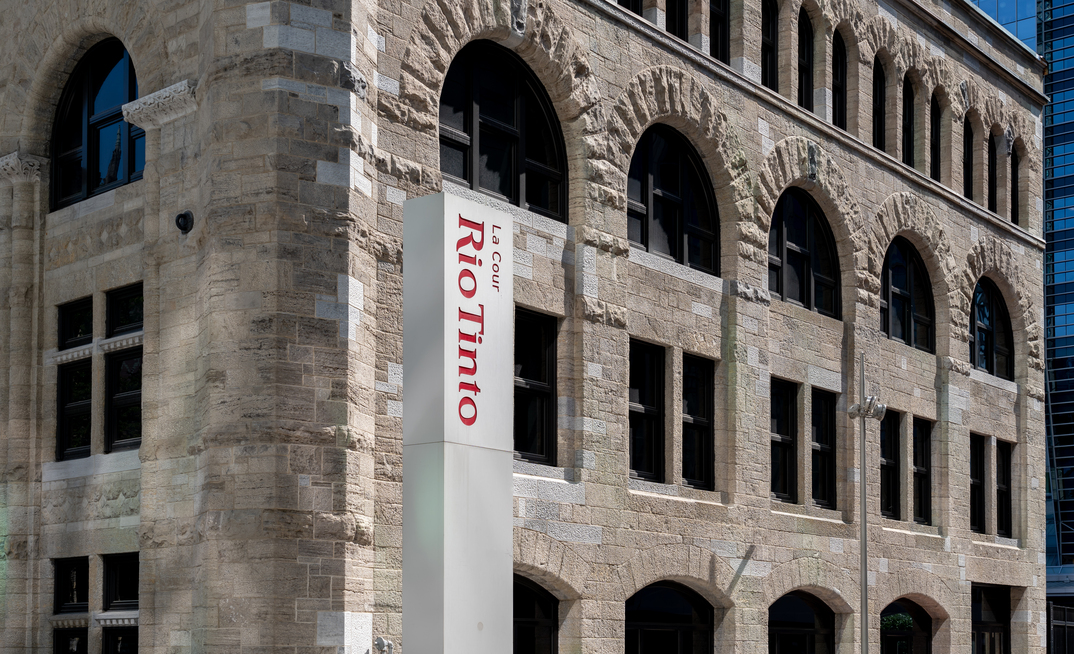The target will be missed as the actual operationalisation of decarbonisation projects, through the implementation of renewables, diesel replacement and process heat abatement, will lag financial commitments the company has made in industrial abatement projects, said Rio.
"These delays are the result of a range of factors including engineering and construction timelines, [and] the need to carefully integrate our ambitions with the needs of our local communities and stakeholder groups."
The miner added that while it remains committed to its 2030 goal of reducing emissions by 50%, that delivery of this target remains dependent on the development and delivery of new low-carbon energy solutions at Pacific Aluminium operations.
Rio noted that in 2022, that business unit contributed 70% of total Scope 2 electricity emissions and 48% of total Scope 1&2 emissions.
Efforts will be aided by a focus on scaling up "industry breakthrough technologies", including initiatives such as Rio's investments in low carbon aluminium processes.
These include its support of Quebec-based disruptive aluminium smelting technology solution ELYSIS+, which uses an inert-anode technology uses a proprietary process, first developed by Alcoa, that eliminates all direct greenhouse gas (GHG) emissions from the traditional smelting process, emitting clean oxygen as byproduct.
'Soft conditions'
The lack of environmental progress contrasted with relative business strength in the half-year update. Rio reported a 5% volume uplift, contributing to improved operational performance, despite facing softer market conditions.
Rio Tinto achieved an underlying EBITDA of $11.7 billion, a 25% decrease compared to the same period in the previous year. The company's net cash generated from operating activities stood at $6.975 billion, down 33% from the previous year's figure of $10.474 billion.
Profit after tax attributable to owners of Rio Tinto, referred to as "net earnings" throughout the release, amounted to $5.1 billion, reflecting a decline of 43% from the previous year's $8.943 billion. This reduction was partially due to $0.8 billion of impairments related to the Australian alumina refineries.
The company's underlying earnings reached $5.7 billion, leading to an interim dividend of $2.9 billion, a 50% payout, in line with their practice. Rio Tinto also reported consolidated sales revenue of $26.7 billion, a 10% decrease from the previous year's $29.775 billion.
Rio Tinto's Chief Executive, Jakob Stausholm, expressed confidence in the company's future prospects, highlighting their ongoing momentum in the Pilbara iron ore business, which has shown continuous improvement with five consecutive quarters of year-on-year growth. He emphasized the importance of enhancing assets' health, focusing on culture, mindset, and relationships to drive positive results.
Stausholm also mentioned the company's commitment to shaping its portfolio for the future, with notable progress in projects like the Oyu Tolgoi underground, the acquisition of Turquoise Hill Resources, and the upcoming Simandou iron ore project in Guinea, expected to receive final approvals later this year.
In the Pilbara
The Pilbara operations produced 160.5 million tonnes of iron ore in the first half of 2023, up 7% on the 2022 first half, with shipments of 161.7Mt also 7% higher.
Shipments included 16.8Mt, or 10%, of lower-grade product.
Pilbara operations delivered underlying earnings before income, taxes, depreciation and amortisation of $9.8 billion, down 6% on the 2022 first half, due to lower prices.
Stausholm said a 14% decline in the monthly average Platts index for 62% iron fines adjusted to a free on board basis was partly offset by higher sales volumes and improved product mix, following the ramp-up of Gudai-Darri.
"Cost escalation from inflation was offset by a weaker Australian dollar while increased iron ore volumes offset a higher mine work index and mine maintenance costs," Stausholm said.
"We achieved an average iron ore price of $98.60 per wet metric tonne on a FOB basis across our product suite which equates to $107.20 per dry metric tonne, assuming 8% moisture, which compares with the monthly average Platts index for 62% iron fines converted to a FOB basis of $109.80/dmt."
Stausholm said Pilbara operations also delivered freight revenue of $900 million.
Bauxite and alumina production
Rio Tinto produced 25.6Mt of bauxite in the 2023 first half, down 8% on the 2022 first half, due to higher-than-average rainfall during the wet season at Weipa in Far North Queensland that reduced pit access and stretched out haul distances.
Production was further affected by equipment downtime at both Weipa and Gove.
Shipping was down 14% on the 2022 first half with 17Mt going to third parties.
Bauxite sales brought in revenue of $1.1 billion, down 11% on the 2022 first half.
Alumina production of 3.7Mt was 1% lower than the 2022 first half, with improved operational stability at Yarwun offset by unplanned plant downtime at Queensland Alumina operations.
Executive comment
"We have a clear pathway to building an even stronger Rio Tinto and continue to gain momentum in our strategy to set the business up for long-term success," said Stausholm.
"We are making good progress on pursuing our four objectives as we build further momentum in our Pilbara iron ore business, mindful that we need to raise our game across many of our other operations."
Stausholm said disciplined investment was delivering results, with the Pilbara iron ore business consistently improving its performance with five consecutive quarters of year-on-year growth.
"We will continue paying attractive dividends and investing in the long-term strength of our business as we sustain and grow our portfolio, while contributing to society's drive to net zero," he said.
























